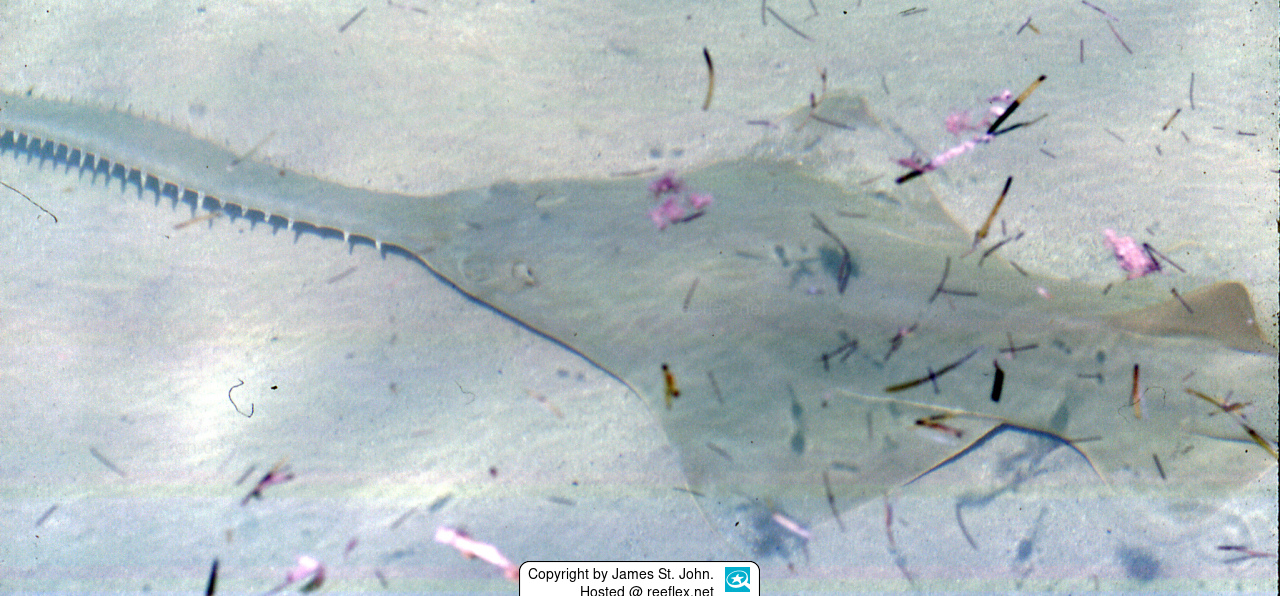Info
The IUCN Red List of Threatened Species has classified this sawfish as “Critically Endangered”!
Fittingly, Live Science's recent report that a mass die-off of sawfish in Florida is increasingly puzzling, as lab results have not shed any light on the cause (The report is listed under the “Related Links” for further reading.
Pristis pectinata is a coastal and intertidal species, but can cross deep water to reach offshore islands; also ascends into rivers and can tolerate fresh water.
The sawfish can often be found in bays, lagoons, estuaries and river mouths.
Pristis pectinata feeds on fish and crustaceans
Pregnant females have up to 20 embryos inside them, which take a year to gestate, and the young are born in shallow bays and estuaries.
The large sawfish uses its saw to shake up the bottom when feeding on bottom-dwelling invertebrates and to kill pelagic fish.
It is used as a food fish; the fish oil is used to make medicine, soap and to tan leather.
Adult animals are stuffed for decorative purposes.
It is reported to be aggressive towards sharks when kept in tanks.
Pristis pectinata is currently protected in several areas as its populations are highly endangered.
Saw rays are bottom-dwelling, elongated rays with a long, toothed rostrum (saw) that can grow up to 170 cm long.
With the help of this “saw”, the ray stirs around in the seabed to flush out bottom-dwelling invertebrates and then eat them.
Caution:
Please do not touch or disturb a saw ray under any circumstances, as it can easily inflict deep and bleeding wounds on people's arms and legs with its saw.
Blood in the sea also very quickly attracts sharks, which can inflict far greater injuries on the injured person, in the worst case even death.
Fittingly, Live Science's recent report that a mass die-off of sawfish in Florida is increasingly puzzling, as lab results have not shed any light on the cause (The report is listed under the “Related Links” for further reading.
Pristis pectinata is a coastal and intertidal species, but can cross deep water to reach offshore islands; also ascends into rivers and can tolerate fresh water.
The sawfish can often be found in bays, lagoons, estuaries and river mouths.
Pristis pectinata feeds on fish and crustaceans
Pregnant females have up to 20 embryos inside them, which take a year to gestate, and the young are born in shallow bays and estuaries.
The large sawfish uses its saw to shake up the bottom when feeding on bottom-dwelling invertebrates and to kill pelagic fish.
It is used as a food fish; the fish oil is used to make medicine, soap and to tan leather.
Adult animals are stuffed for decorative purposes.
It is reported to be aggressive towards sharks when kept in tanks.
Pristis pectinata is currently protected in several areas as its populations are highly endangered.
Saw rays are bottom-dwelling, elongated rays with a long, toothed rostrum (saw) that can grow up to 170 cm long.
With the help of this “saw”, the ray stirs around in the seabed to flush out bottom-dwelling invertebrates and then eat them.
Caution:
Please do not touch or disturb a saw ray under any circumstances, as it can easily inflict deep and bleeding wounds on people's arms and legs with its saw.
Blood in the sea also very quickly attracts sharks, which can inflict far greater injuries on the injured person, in the worst case even death.







 James St. John, USA
James St. John, USA


